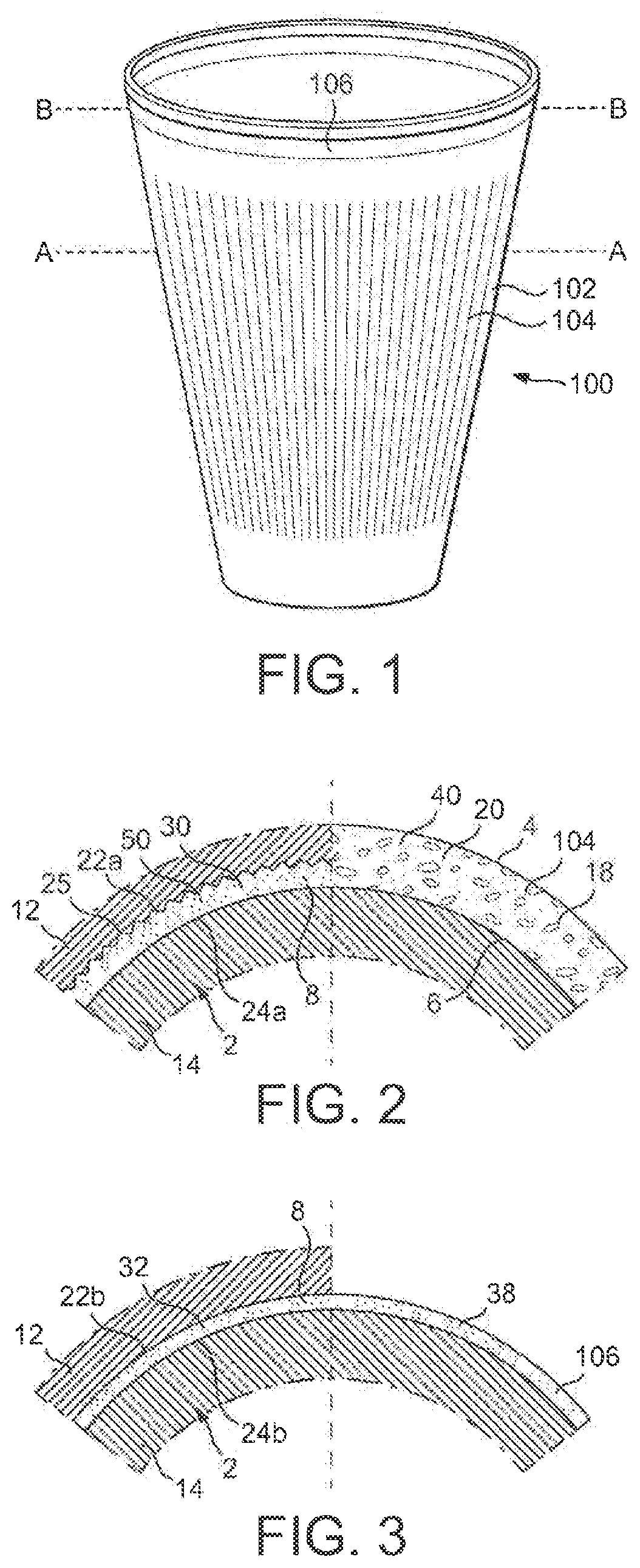Method of Forming an Article
a technology of foamed plastic and articles, which is applied in the direction of other domestic articles, rigid containers, transportation and packaging, etc., can solve the problems of difficult control of the process unexpanded regions, and difficult to achieve transparent, or visually clear, etc., to achieve the effect of increasing the crystallinity of the plastic composition, increasing the rigidity of the cellular foamed plastic composition, and increasing the stiffness
- Summary
- Abstract
- Description
- Claims
- Application Information
AI Technical Summary
Benefits of technology
Problems solved by technology
Method used
Image
Examples
Embodiment Construction
[0018]Referring to FIG. 1, there is shown a side view of an article, for example, a cup such as a coffee cup, formed by the method of the present invention.
[0019]The cup 100 has an annular sidewall 102 having an annular expanded foam region 104 and an annular unexpanded region 106. In this specification, the term “annular” means “generally ring-like”, is not limited to geometrically circular shapes, and encompasses shapes that may be circular or other than circular, for example elliptical, polygonal, etc. The expanded foam region 104 typically has a thickness of from 1 to 4 mm, optionally from 1 to 3 mm. The unexpanded region 106 typically has a thickness of from 0.25 to 0.75 mm, optionally from 0.25 to 0.5 mm.
[0020]The expanded foam region 104 appears translucent to the naked eye because the expanded cellular foam includes cells that have cellular walls that reflect visible light. However, if a pigment is incorporated into the thermoplastic polymer at a high concentration, the expa...
PUM
| Property | Measurement | Unit |
|---|---|---|
| pressure | aaaaa | aaaaa |
| packing pressure | aaaaa | aaaaa |
| thickness | aaaaa | aaaaa |
Abstract
Description
Claims
Application Information
 Login to View More
Login to View More - R&D
- Intellectual Property
- Life Sciences
- Materials
- Tech Scout
- Unparalleled Data Quality
- Higher Quality Content
- 60% Fewer Hallucinations
Browse by: Latest US Patents, China's latest patents, Technical Efficacy Thesaurus, Application Domain, Technology Topic, Popular Technical Reports.
© 2025 PatSnap. All rights reserved.Legal|Privacy policy|Modern Slavery Act Transparency Statement|Sitemap|About US| Contact US: help@patsnap.com

